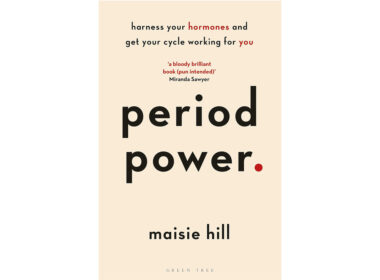Ask the CDC to report accurate data on side-effect free and effective Family Planning Method
When Noelle* and her husband, parents of three, decided that they wanted to delay another pregnancy, she was put on “the shot,” at her doctor’s suggestion.
Quickly, she gained weight and became depressed, moody and angry.
Was there no other solution for Noelle?
There was, there is: highly effective family planning options with no side-effects at all called Fertility Awareness Based Methods (FABMs).
 While not all women experience side-effects from contraceptives, when they do, most doctors won’t think of suggesting FABMs because of their perceived low effectiveness…even though FABMs would eliminate some of the complaints their patients have and in fact have proven high rates of effectiveness when used to avoid pregnancy.
While not all women experience side-effects from contraceptives, when they do, most doctors won’t think of suggesting FABMs because of their perceived low effectiveness…even though FABMs would eliminate some of the complaints their patients have and in fact have proven high rates of effectiveness when used to avoid pregnancy.
Like Noelle’s doctor, most medical professionals, along with prominent websites on women’s health and reports in the media, generally discount this option, because they are told that FABMs have a 24% “failure” rate[i].
But this rate is not accurate.
Based on the most up-to-date and highest quality published medical research, the effectiveness rates of FABMs with correct use are between 95 and 99.5%, depending on the method[ii]. Even with typical use, the effectiveness rates of FABMs are comparable to most commonly used forms of birth control.
Where do the medical professionals and the media get this misleading information? All refer to the website of the Centers for Disease Control and Prevention (CDC), which published a report in 2011 that lists FABMs as the least effective method. But this data is based on one study with a low quality research design. (Please keep reading to learn the specific problems with this study).
As a result, FABMs are often not even presented to women as an option. Yet up to 61% of women would be interested in these methods to avoid pregnancy if they were properly informed about them.[iii], [iv]
Fertility Awareness Based Methods are left out of women’s viable family planning options in large part because the information published by the CDC does not accurately reflect effectiveness rates for individual FABMs based on the highest quality research. Since many health professionals and medical organizations rely on the CDC for accurate information, it is very important that we ask the CDC to update its website with evidence-based data that shows the accurate effectiveness rates of modern FABMs for preventing pregnancy.
Correct information is KEY to helping women make their own informed choices about family planning methods.
This is why we are asking you urgently to sign the petition below. We need 100,000 signatures to convince the CDC to reconsider this crucial issue, and to get them to update their website.
Sign the petition now
Why is the CDC reporting inaccurate data about FABM effectiveness rates? The CDC report is based on a study with a low-quality research methodology,[v] which explains why its conclusions are so far from what quality studies show us. Here are the key problems with the study quoted by the CDC:
First bias: The effectiveness rates are based on a retrospective survey. Specifically, in 1995 and 2002, the research team surveyed about 18,000 women and asked them to recall the method of birth control they were using when they got pregnant.[vi],[vii] Recall is a weak measure. The respondents could have used a mix of methods. Any description that sounded like a fertility awareness method was put in the “periodic abstinence” group.
Second bias: The authors put much older, low-tech methods, including the calendar rhythm method, in the same basket as modern, standardized, and proven FABMs such as the Sympto-Thermal and Ovulation methods. In fact, 86% of those whom the study identified as FABM users stated they used the calendar rhythm method—a much older and less effective method developed in the 1930s—as their primary form of contraception. But lumping together old and new natural methods masks important differences in their effectiveness, a fact acknowledged by the author of the study. It would be akin to putting all progesterone methods like the Mirena IUD and the mini-pill in the same category and then classifying them together as having one lower effectiveness rate.
So what is the truth about effectiveness rates of FABMs that the CDC needs to report? Here is the evidence-based data of 4 of the most popular methods based on an article published in May 2013 by the Osteopathic Family Physician Journal and a more recent study of the Marquette method.[viii]
- Sympto-thermal Method: pregnancy rate with perfect use 0.4%, with typical use 1.6%
- Marquette Method: pregnancy rate with perfect use 0%, with typical use 6.8%
- Billings Ovulation Method®: pregnancy rate with perfect use 1.1%, with typical use 10.5%
- Standard Days Method: pregnancy rate with perfect use 4.8%, with typical use 11.9%
As you see, these unintended pregnancy rates are far from the 24% rate put forth by the CDC. Therefore, we need the CDC to report these up-to-date effectiveness rates!
Additionally, we need to make sure the CDC updates their information so health care professionals will be properly informed, as only 3 to 6% of physicians[ix] know the true effectiveness of these safe, side-effect free methods of family planning. This may be why few are telling women about these methods.
But working together, YOU and I can change this and make sure all women receive accurate, up-to-date information. That is why we are asking you to sign the enclosed petition, and forward it to all of your friends and colleagues.
Sign the petition now
In fact, on April 21, 2016, the prestigious American Academy of Family Physicians (AAFP), which represents over 120,000 members, wrote an official request to the Department of Health and Human Services asking that the effectiveness rating be changed. They wrote:
“Family physicians need accurate data to share with patients who are making family planning decisions. The AAFP would therefore like to request that the CDC update the effectiveness rates quoted for these methods in the ‘Effectiveness of Family Planning Methods’ resource.”
To date, one year later, there has been no public response. No apparent action taken to consider the evidence offered by the AAFP.
Women who have experienced side effects from hormonal or other types of birth control need to know there are other viable options, such as FABMs. Indeed the World Health Organization recognizes FABMs as the only methods of family planning with no medical side effects[x]; whereas hormonal birth control may have a myriad of side effects, ranging from mild symptoms, such as nausea, bleeding or breast tenderness, to more severe ones such as an increased risk of blood clots, certain types of cancer or stroke. In fact, research shows almost two thirds of women who stopped using hormonal birth control did so because of adverse side effects.[xi]
We are not advocating that access to artificial forms of birth control be limited. We are simply advocating that accurate information about FABMs be provided to the public.
This is why your signature is urgently needed. If we don’t take action, nothing will change.
Together, we need to speak up and ask the CDC to update their report. This is important for women, for couples, and for the medical professionals who advise them. Without correct information, health professionals may not routinely present these options to women and thus, women cannot make truly informed choices regarding family planning.
It is important to note there are many benefits for women and couples who use FABMs:
- These methods cost much less than birth control.
- Multiple studies show that couples who use FABMs report it improves their relationships.[xii] [xiii]
- Young women who learn to use FABMs are empowered and gain self-confidence and self-control.[xiv]
- Couples interested in getting pregnant will increase their chances to do so by better understanding when they may be fertile.[xv]
If the CDC updates the report of FABM effectiveness rates, it will be a huge game-changer for women’s health. Doctors may be more likely to discuss these methods with their patients. More women will learn about these methods and benefit from a highly effective, self-managed method, with no-side effects at all. Not only that, but they will better understand their bodies and learn a life-long skill.
We need this change for the sake of women’s health. But without your voice, the CDC may not act. Please support and sign this petition now. Act today and make your voice heard to ensure every physician and every woman has access to accurate, up to date information. Act today to ask the CDC to report the correct effectiveness rates of FABMs.
We intend to use your signature and others to make sure a united voice is heard in the press and at the US Department of Health and Human Services. To have the greatest impact we need to gather 100,000 signatures, so PLEASE SIGN it, and then share it with friends and family!
With your support, we will make sure the voices of thousands of Americans are heard.
Thank you very much for your help in making a difference! Our website is highly secure and your contact information will remain strictly confidential. We have an iron-clad anti-spam policy. We need as many signatures as possible to urgently move this important matter forward.
Thank you again for your help,
Sign the petition now
Gerard Migeon
Co-founder, President and CEO,
Natural Womanhood
[i] How effective are birth control methods? The Centers for Disease Control, 2011 https://www.cdc.gov/reproductivehealth/contraception/
[ii] Manhart MD, Duane M, Lind A, et al. Fertility awareness-based methods of family planning: a review of effectiveness for avoiding pregnancy using SORT. Osteopathic Fam Physician. 2013;5(1):2–8.
[iii] Leonard CJ, Chavira W, Coonrod DV, Har KW, Bay RC. Survey of attitudes regarding natural family planning in an urban Hispanic population. Contraception. 2006; 74: 313-317.
[iv] Duane M, Motley R, Manhart M. Physicians Need More Education About Natural Family Planning, Am Fam Physician. 2013 Aug 1;88(3):158-159.
[v] Trussell J. Contraceptive Efficacy. In Hatcher RA, Trussell J, Nelson AL, Cates W, Kowal D, Policar M. Contraceptive Techology: Twentieth Revised Edition. New York NY: Ardent Media, 2011.
[vi] Chandra A, Martinez GM, Mosher WD, Abma JC, Jones J. Fertility, family planning, and reproductive health of U.S. women: Data from the 2002 National Survey of Family Growth. National Center for Health Statistics. Vital Health Stat 23(25). 2005.
[vii] Abma J, Chandra A, Mosher W, Peterson L, Piccinino L. Fertility, family planning, and women’s health: New data from the 1995 National Survey of Family Growth. National Center for Health Statistics. Vital Health Stat 23(19). 1997.
[viii] Fehring, R., Schneider, M., Raviele, K, & Rodriguez, D. Randomized Comparison of Two Internet-Supported Fertility Awareness Based Methods of Family Planning, Contraception. 88(1): 24-30, 2013.
ix Choi J, Chan S, Wiebe E. Natural Family Planning: Physicians’ Knowledge, Attitudes, and Practice J Obstet Gynaecol Can 2010;32(7):673–678.
[x] Festin MPR, Diariea J, Solo J, Kiariea J, Malarcher S, Van Look PFA, Temmerman M. Moving towards the goals of FP2020 — classifying the goals of contraception. Contraception. 2016; 94: 289-294.
[xi] Barr NG. Managing adverse effects of hormonal contraceptives. Am Fam Physician. 2010 Dec 15;82(12):1499-1506.
[xii] VandeVusse L, Hanson L, Fehring RJ, Newman A, Fox J. Couples’ views of the effects of natural family planning on marital dynamics. Journal of Nursing Scholarship. 2003;35(2):171-6
[xiii] Unseld M, Rötzer E, Weigk R, Masel EK, Manhart MD. Use of Natural Family Planning (NFP) and its effect on couple relationships and sexual satisfaction: a Multi-country survey of NFP Users from US and Europe, Frontiers in Public Health, March 2017
[xiv] Klaus H, Dennehy N and Turnbull J. Undergirding Abstinence Within a Sexuality Education Program. Presented at Teen Pregnancy Prevention Conference, Pennsylvania State University, State College, PA, October 21, 2001
[xv] Gnoth C, Godehardt D, Godehardt E. Time to pregnancy: results of the German prospective study and impact on the management of infertility, Human Reproduction Vol.18, No.9 pp. 1959-1966, 2003.





